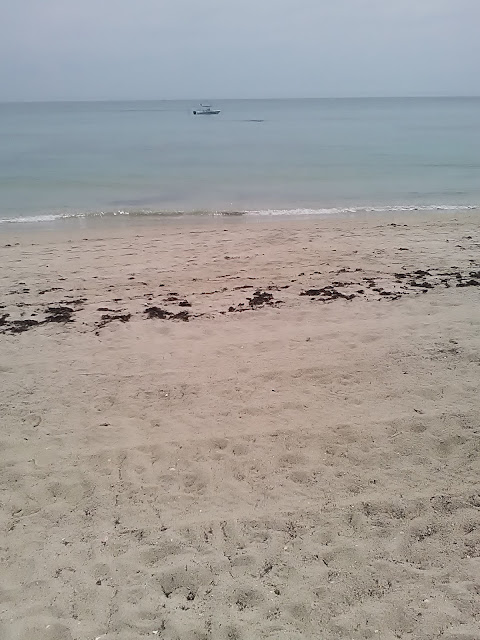Written by the TreasureGuide for the exclusive use of treasurebeachesreport.blogspot.com.
 |
Sebastian Area Beach
Webcam capture submitted by Darrel S. |
 |
Same Beach Another Time.
Webcam capture submitted by Darrel S. |
Darrel sent the above two webcam images of the same beach - one taken after a rain and the other when it was nice and sunny. Darrel suggested using technology such as webcams so you can see what is going on and know where to metal detect. You might not like metal detecting in the heat when all the sun-bathers are out, but you can check to see where the crowds are when you aren't on the beach.
I haven't talked about shallow water hunting for modern items lately. I'll do that a little today.
Generally speaking, beaches and areas that have more people will produce more finds, but that isn't always the case. It is a more complicated than that. There are a lot of factors. For one thing, as I've said before, some groups don't wear or carry much of anything to lose. There are cultural differences and socioeconomic differences. There are also differences between condo beaches frequented by residents who tend to take items off before going out to the beach, and resort visitors, who are less likely, for various reasons, to remove their valuables before going in the water. Those are just a few examples of differences between various groups of people.
Young active people are also much more likely to lose valuables in the water than older cautious people.
In addition to people differences, beach conditions are important too. When people are on a sand bar, items can be covered quickly. When that is happening you'll have to find an item before it disappears. How quickly it disappears will depend upon how the water is moving the sand. It can take months or years for an item to be exposed again.
The dip in front of the sand bar can be good or not so good. The dip will fill up at times and get cleaned out at times. A couple feet of lose material can quickly accumulate in the dip covering up items like rings.
The following illustration shows a crude illustration of one beach area in front of a Fort Lauderdale resort that I used to hunt a lot. There was usually small dip and a sand bar in front of the resort. On the other side of the sand bar was gradually deepening water.
The beach didn't change much over the years. People always congregated on the sand bar in front of the cabanas and beach chairs. Of course they crossed the dip to get to the sand bar and wondered off the sand bar at times, but most of the time the vast majority congregated on a small area on the sand bar.
Where do you think the majority of finds were made?
If you guessed on the sand bar, that is a good guess - but wrong. And it wasn't in the dip, or on the deep side of the sand bar.
There was almost always a hot spot just to south. I outlined the hot spot below (big grey circle). I could almost always find coins and jewelry in the hot spot even though I rarely saw people in that area.
Once in a while I would find a newly lost item on the sand bar where most of the people congregated, and occasionally something would show up in the dip, but usually I could find the good hot spot to the south of that. The items in the hot spot were often discolored. They were not recent losses, but had accumulated over time in that one area. That area was a pretty consistent producer.
My main point is that the best spot is not always were the most people go, although you will find items that were just lost there if you are quick enough. Remember, sand bars move. Sand is pealed away and the sand bar moves in one direction or another. And dips fill and unfill. If you happen to catch a dip that has recently formed and has been cleaned out deeper than usual, that can be a real hot spot too. It would take me a really long time to try to describe how all of that occurs, so I won't try to do it now.
It pays to really get to know your beaches. It takes time. You have to explore a little, but once you know a beach, you can take advantage of that knowledge for months or years.
Don't forget that the sand is almost always moving to some extent, as do other items. I've talked about trigger points and things like that in the past.
The history of a beach is important too. Beaches go through phases. They can be popular for a while, then became old and outdated and then be revived again. Beaches that are not busy and active now, may have been in the past. Coins and modern jewelry items can still be found years or decades after they were lost. All it takes is for the sand to move. I often hunted beaches that were not currently the most busy and popular beaches.
---
 |
| Source: nhc.noaa.org |
As you can see, we now have one disturbance to watch.
The surf remains calm and the tides pretty big.
Happy hunting,
TreasureGuide@comcast.net


































